Welcome to the Amira-Avizo Software Use Case Gallery
Below you will find a collection of use cases of our 3D data visualization and analysis software. These use cases include scientific publications, articles, papers, posters, presentations or even videos that show how Amira-Avizo Software is used to address various scientific and industrial research topics.
Use the Domain selector to filter by main application area, and use the Search box to enter keywords related to specific topics you are interested in.

Metal additive manufacturing techniques such as the powder-bed systems are developing as a novel method for producing complex components.
This study uses synchrotron-based X-ray microtomography to investigate porosity in electron beam melted Ti-6Al-4V in the as-built and post-processed state for two different powders. The presence of gas porosity in the starting powder was shown to correlate to porosity in the as-built components. This porosity was observed to shrink after a hot isosta... Read more
Ross Cunningham, Andrea Nicolas, John Madsen, Eric Fodran, Elias Anagnostou, Michael D. Sangid & Anthony D. Rollett
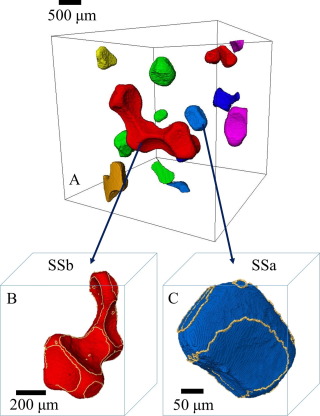
Multiphase flow in porous media is strongly influenced by the wettability of the system, which affects the arrangement of the interfaces of different phases residing in the pores.
We present a method for estimating the effective contact angle, which quantifies the wettability and controls the local capillary pressure within the complex pore space of natural rock samples, based on the physical constraint of constant curvature of the interface between two fluids. This algorithm is ... Read more
Alessio Scanziani, Kamaljit Singh, Martin J. Blunt, Alberto Guadagnini
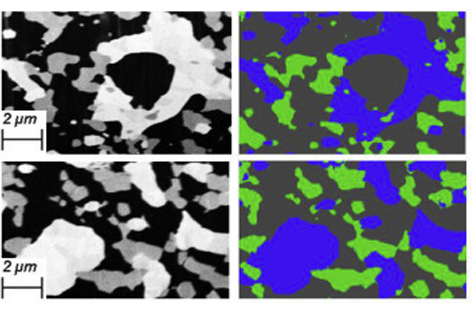
Quantification of the degradation of Ni-YSZ anodes upon redox cycling
Ni-YSZ anodes for Solid Oxide Fuel Cells are vulnerable to microstructural damage during redox cycling leading to a decrease in the electrochemical performance.
- Quantification of redox damage by coupling 3D tomography, EIS and nanoindentation.
- YSZ fracture, Ni detachment and agglomeration led to irreversible mechanical damage.
- Ni nanoparticles obtained upon redox cycling improve electrochemical performance.
- Loss in TPB densi... Read more
Bowen Song, Enrique Ruiz-Trejo, Antonio Bertei, Nigel P.Brandon
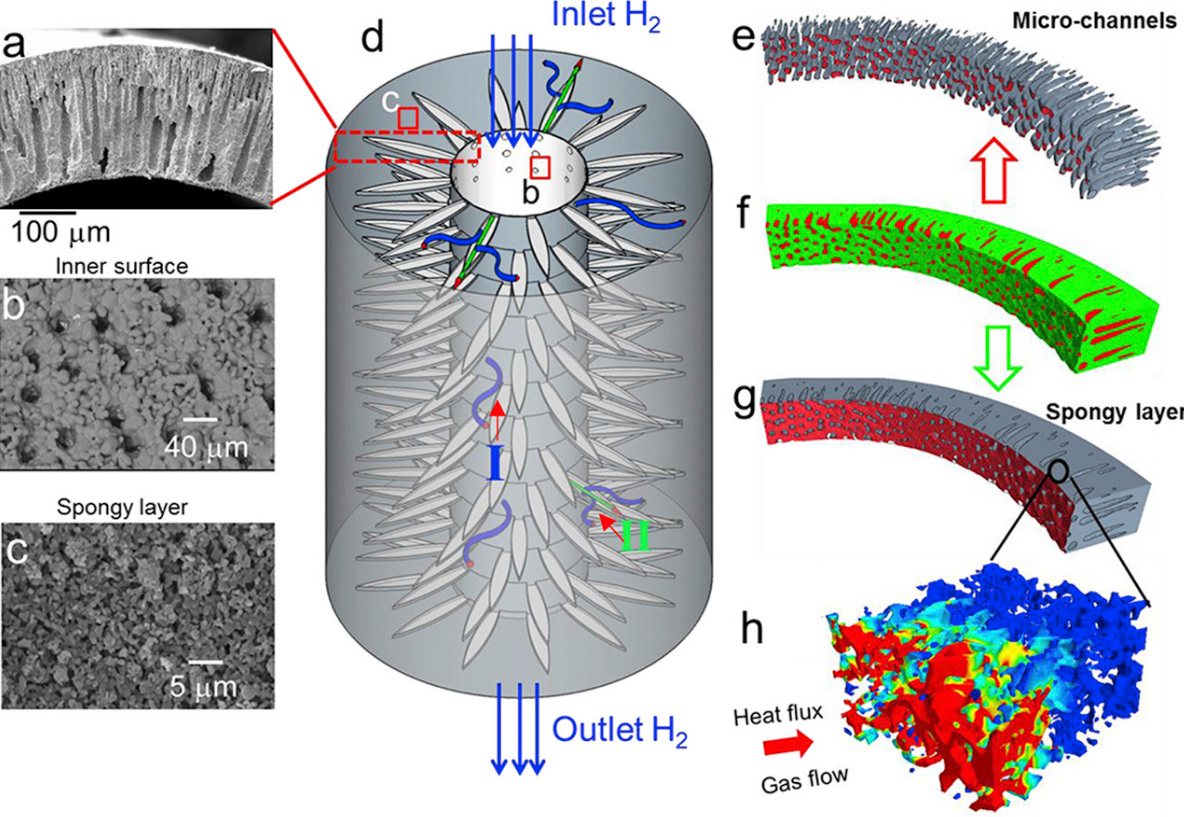
Our parametric study shows that increasing the porosity in the spongy layer beyond 10% enhances the effective transport parameters of the spongy layer at an exponential rate, but linearly for the full anode. For the first time, local and global mass transport properties are correlated to the microstructure, which is of wide interest for rationalizing the design optimization of SOFC electrodes and more generally for hierarchical materials in batteries and membranes.
Read more
Xuekun Lu, Oluwadamilola O. Taiwo, Antonio Bertei, Tao Li, Kang Li, Dan J.L. Brett, Paul R.Shearing
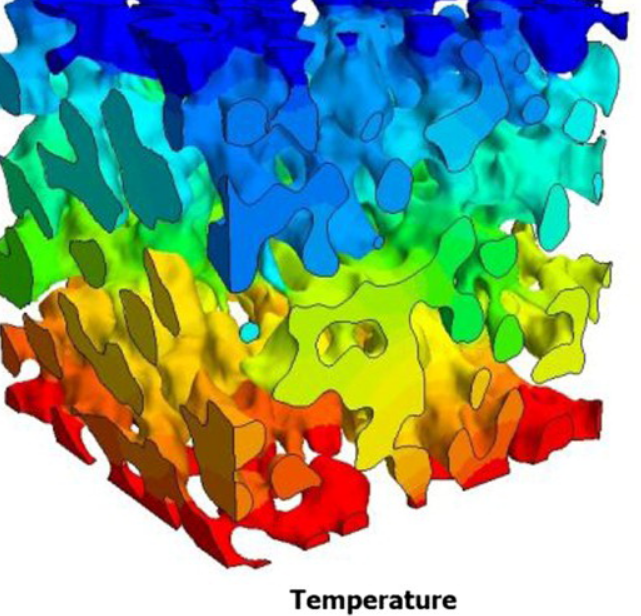
Tortuosity in electrochemical devices: a review of calculation approaches
Here, a review of tortuosity calculation procedures applied in the field of electrochemical devices is presented to better understand the resulting values presented in the literature. Visible differences between calculation methods are observed, especially when using porosity–tortuosity relationships and when comparing geometric and flux-based tortuosity calculation approaches.
Read more
Bernhard Tjaden, Dan J. L. Brett, Paul R. Shearing
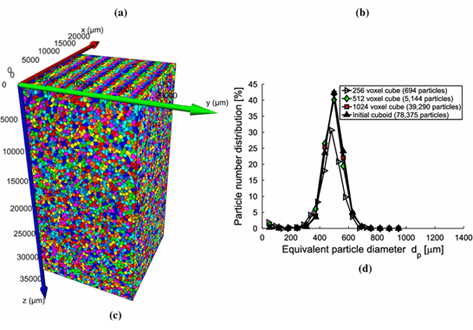
Hydraulic properties of porous sintered glass bead systems
In this paper, porous sintered glass bead packings are studied, using X-ray Computed Tomography (XRCT) images at 16μm16μm voxel resolution, to obtain not only the porosity field, but also other properties like particle sizes, pore throats and the permeability. The influence of the sintering procedure and the original particle size distributions on the microstructure, and thus on the hydraulic properties, is analyzed in detail. The XRCT data are visualized and studied by advanced image fil... Read more
University of Twente, Enschede | Ruhr-University Bochum; Eindhoven University of Technology | Helmholtz Institute Erlangen-Nürnberg for Renewable Energy | University of Stuttgart
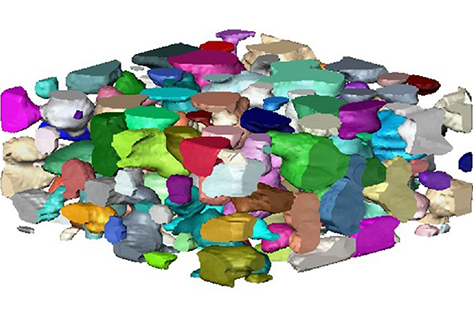
Physical characteristics critical to chromatography including geometric porosity and tortuosity within the packed column were analysed based upon three dimensional reconstructions of bed structure in-situ. Image acquisition was performed using two X-ray computed tomography systems, with optimisation of column imaging performed for each sample in order to produce three dimensional representations of packed beds at 3 μm resolution.
Read more
Department of Biochemical Engineering, University College London | Pall Life Sciences, Portsmouth | Electrochemical Innovation Lab, Department of Chemical Engineering, University College London
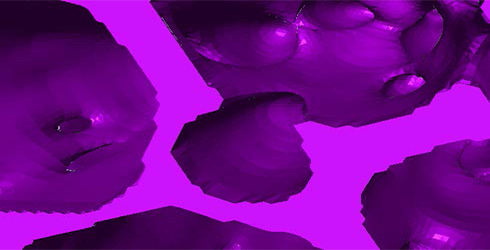
FAMU uses Avizo software to visualize and understand heat transfer and fluid flow
The CHEFF (Computational Heat Fluid Flow) Research group at Florida Agricultural & Mechanical University is using computational fluid dynamics to model flow and heat transfer in various engineering applications for industry, government and the private sector. The primary goal of this research is to first examine and then enhance the thermal performance of current and future low-density reticulated porous media, and explore their use as heat sinks in high power electronics (computer chips... Read more
CHEFF Research Group at Florida Agricultural & Mechanical University: Dr. G.D. Wesson, Professor of Chemical Engineering/Biological Agricultural Systems Engineering, Shawn Austin (Graduate student), Shari Briggs (Graduate student), Mellissa McCole (Graduate student), David Mosley (Graduate student)
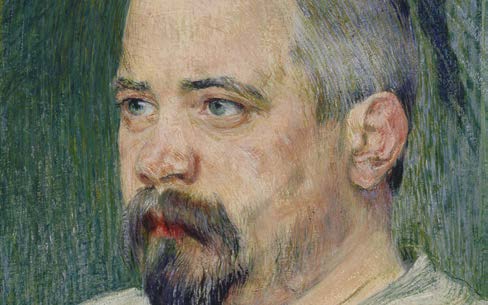
SIK-ISEA uses Avizo software to understand 19th century painting techniques
The characterization of the porosity of ground layers in easel paintings: a first step towards understanding its role in water uptake, reactivity and material transport in 19th and early 20th century paintings. The Swiss Institute for Art Research (SIK-ISEA) is studying the studio practice of Swiss painters of the late 19th early 20th century, the materials they used for their paintings, and the deterioration processes the paintings undergo as they age.
Amongst other issues this study... Read more
SIK-ISEA